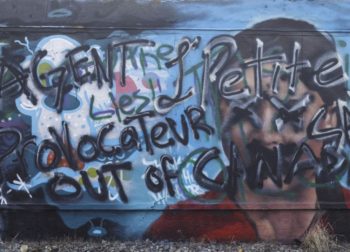 How we think and talk about climate policy is profoundly shaped by 31 different computer models that produce a wide range of scenarios of the future, starting from the base year of 2005.
How we think and talk about climate policy is profoundly shaped by 31 different computer models that produce a wide range of scenarios of the future, starting from the base year of 2005.
With 2020 right around the corner, we now have enough experience to ask how well these models are doing. Based on my preliminary analysis reported below, the answer appears to be not so well.
Before proceeding, it is important to remember that climate change poses significant risks to our collective futures, and aggressive policy action makes sense on both the mitigation of emissions and adaptation to variability and change.
It’s also important to note that taking a clear-eyed view of climate policy and its foundations can be a fraught territory.
As Alistair Sutton, communications director for Future Earth, recently wrote: “For scientists, how to be skeptical about campaigns and policies without being labeled a “climate skeptic” may be one of the next challenges.”
The importance of climate change does not provide the topic a free pass from scrutiny and critique – quite the opposite, it’s importance demands that we carefully and critically examine climate policy proposals and their bases so that we get things right.
Climate policy discussions are framed by the assessment reports of the Intergovernmental Panel on Climate Change (IPCC).
There are of course discussions that occur outside the boundaries of the IPCC, but the IPCC analyses carry enormous influence.
At the center of the IPCC approach to climate policy analyses are scenarios of the future. The IPCC reports that its database contains 1,184 scenarios from 31 models.
Some of these scenarios are the basis for projecting future changes in climate (typically using what are called Global Climate Models or GCMs).
Scenarios are also the basis for projecting future impacts of climate change, as well as the consequences of climate policy for the economy and environment (often using what are called Integrated Assessment Models or IAMs).
Here I focus on two key metrics directly relevant to climate policy that come from the scenarios of the fifth assessment report (AR5) of the IPCC: economic growth and atmospheric carbon dioxide concentrations.
The scenarios of the AR5 begin in 2005 and most project futures to 2100, with some looking only to 2050. We now have almost 15 years of data to compare against projections, allowing us to assess how they are doing.
h/t GWPF
Read rest at Forbes

















Roger Pielke is trying to sound like he is being reasonable. However, he is missing it from the very beginning. He is starting with the assumption that climate change is a serious problem. If he was being reasonable, he would consider that question first and view data such as the poor correlation between the history of temperature and carbon dioxide levels.
He talks a lot about the IPCC reports. Yet he ignores the fact that these reports are written by politicians, not scientists, and often the findings of the scientists have to be altered to match what the politicians wrote.
“Before proceeding, it is important to remember that climate change poses significant risks to our collective futures, and aggressive policy action makes sense on both the mitigation of emissions and adaptation to variability and change.” B%&&$hi#!
AGWA LIES are a significant risk to OUR futures.
WOW! 15 years. 15 years of data to compare against projections, allowing us to assess how (we) they are doing.” When – NOT ONE PREDICTION OF CLIMATE CHANGE NIGHTMARISH CLAIMS HAS COME TRUE in 15 years. NOT ONE.
Get a clue! Pick up a copy of The Old Farmer’s Almanac. Still has about an 80% accuracy track record since George Washington was President.